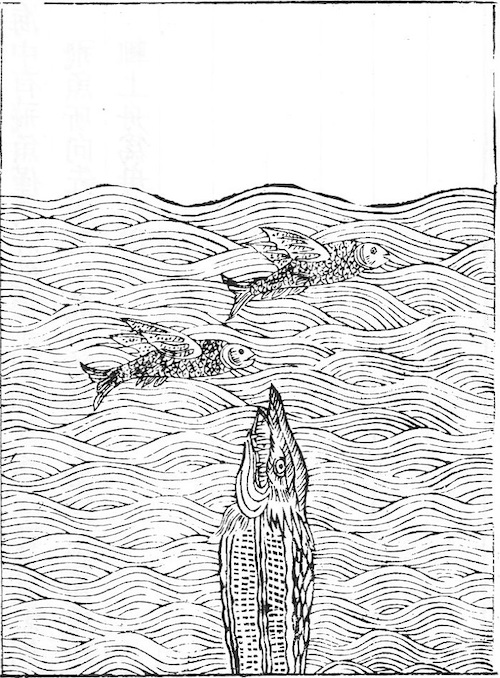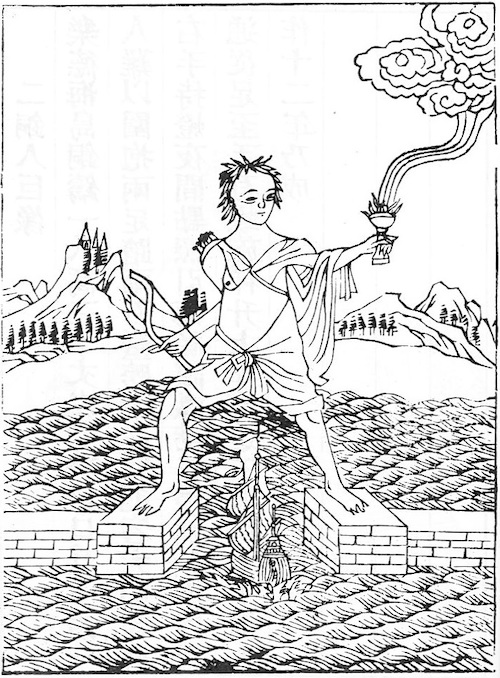Kunyu tushuo 坤輿圖說 "Illustrated explanation of the world" is a world geography compiled by the Jesuit missionary Ferdinand Verbiest (1623-1688, Chinese name Nan Huairen 南懷仁) who held the position of Director of astronomy (qintianjian jianzheng 欽天監監正) under the Kangxi Emperor 康熙 (r. 1661-1722).
The 2-juan long book is divided into 15 chapters and describes routes to other countries, distances, geography, customs of the local population, and local products. Geography is arranged according to the Five Continents, which was a thoroughly new concept to Chinese geographers. This is also true for the explanation of thunder, mountains, the movement of rivers, high tide and low tide, or wind and rain.
It ends with 23 illustrations showing strange animals like the unicorn, rhinoceros, chameleon, tritons, a Portuguese ship, the Seven Wonders of the World (qiqi 七奇), and the Colosseum in Rome (gonglechang 公樂場).
 |
 |
Left: Flying fish (feiyu 飛魚), being caught by the dog fish (gouyu 狗魚), which is able to observe the shadows of flying fish and precalculate their landing spit and so catches them. Right: The (bronze) Colossus (tongren juxiang 銅人巨像) of Rhodes (Lede 樂德). Congshu jicheng chubian 叢書集成初編 edition, fascimile of the Zhihai 指海 edition. |
|
The book is in some respect an extract of Guiglio Aleni's (Chinese name Ai Rulüe 艾儒略) book Zhifang waiji 職方外紀, but also includes information that can supplement Aleni's book. The Kunyu tushuo is not a very scientific book and served to some extent to beautify the world beyond China.
The Kunyu tushuo is included in the series Siku quanshu 四庫全書, Zhihai 指海 and Congshu jicheng 叢書集成.